Reading:
LOFT Process Guides: Define Phase. Techniques: Writing Learning outcomes
Summary:
Notes:
- Creating and online course – tips:
- Establish a community of practice
- Start small
- Start early
- Gather your team
- Gear up
- Be aware of legal issues
- Vary your approach
- Use a style guide
- Learning objectives
- “Learning objectives describe the knowledge and skills we want students to gain from our instruction. Learning objectives are used to provide a framework for selecting and organizing course content and learning activities, guide decisions about assessment and evaluation methods, and give learners information for directing their learning efforts and monitoring their progress.
An assessment is an exercise whose output can be used to measure the attainment of a learning objective. Assessments can serve two purposes: evaluate student performance and foster learning.”
- Main purposes of Learning Objectives
- Communicate our intentions clearly to students and to colleagues.
- Provide a framework for selecting and organizing course content.
- Guide decisions about assessment and evaluation methods.
- Provide a framework for selecting appropriate teaching and learning activities.
- Give students information for directing their learning efforts and monitoring their own progress.
- Goals vs. Objectives + Topics List
- Goals are broader and describe the final state:
- “The end toward which effort is directed”
- Objectives precisely define observable skills and knowledge the audience must demonstrate to show achievement towards the final goal
- “Something toward which effort is directed”
- Topics list is simply a list of content that will be looked at within a course
- Goals are broader and describe the final state:
- Characteristics of an Effective Learning Objective
- ABCD approach
- “The audience is the learner who will demonstrate the behavior under specified conditions and to an acceptable degree.”
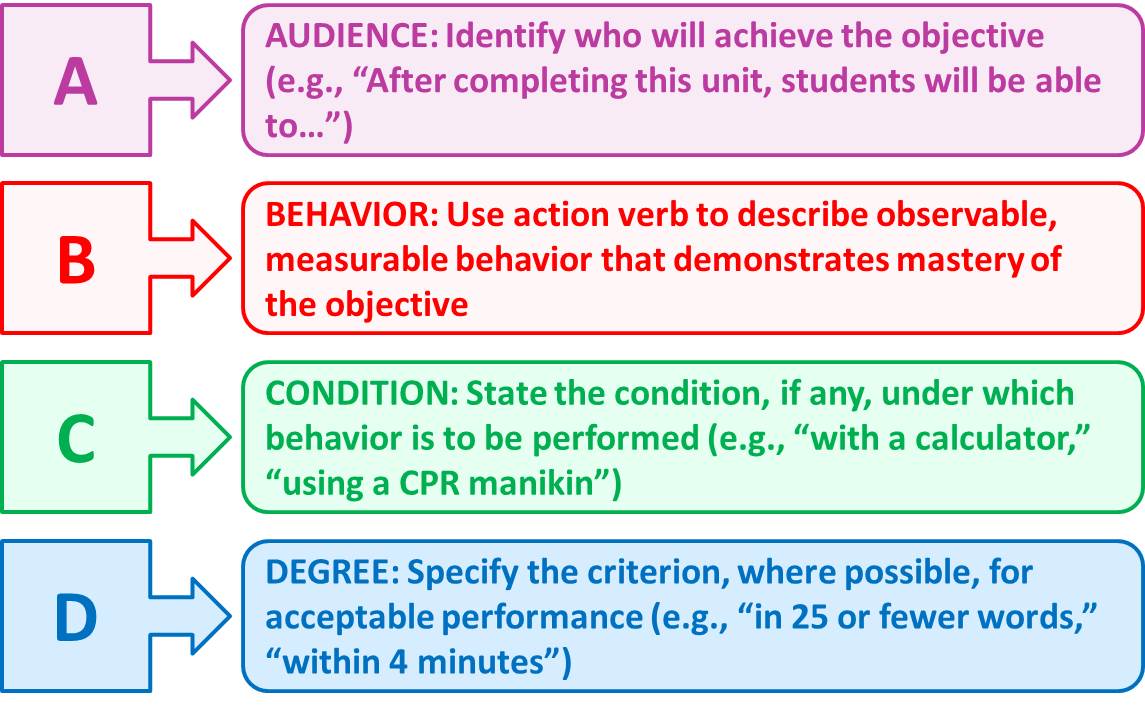
- Not every learning objective must include a condition or a degree
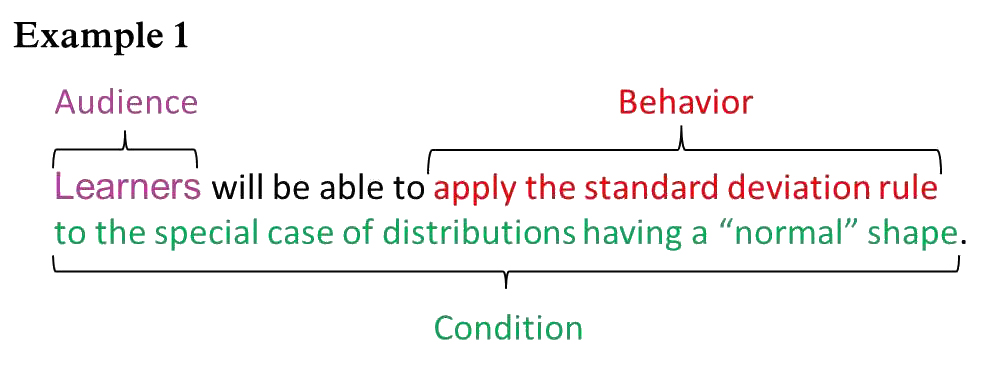
- The order is also not important
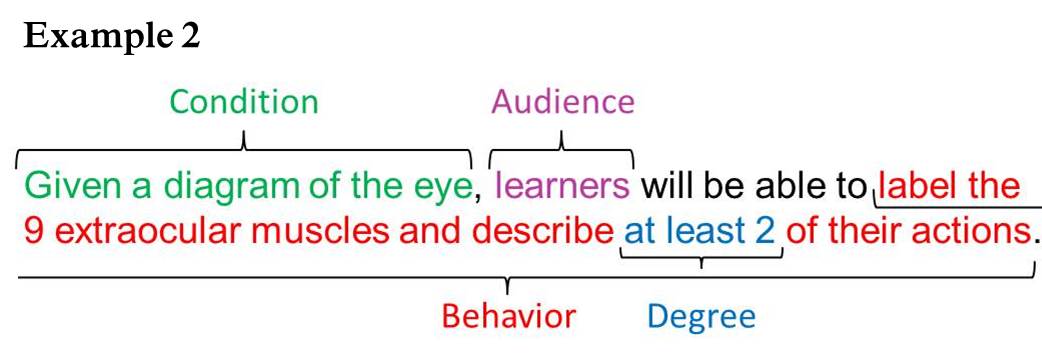
- Audience
- The better you understand your audience the more effective your learning objective, and thus your course might be
- Prior Knowledge:
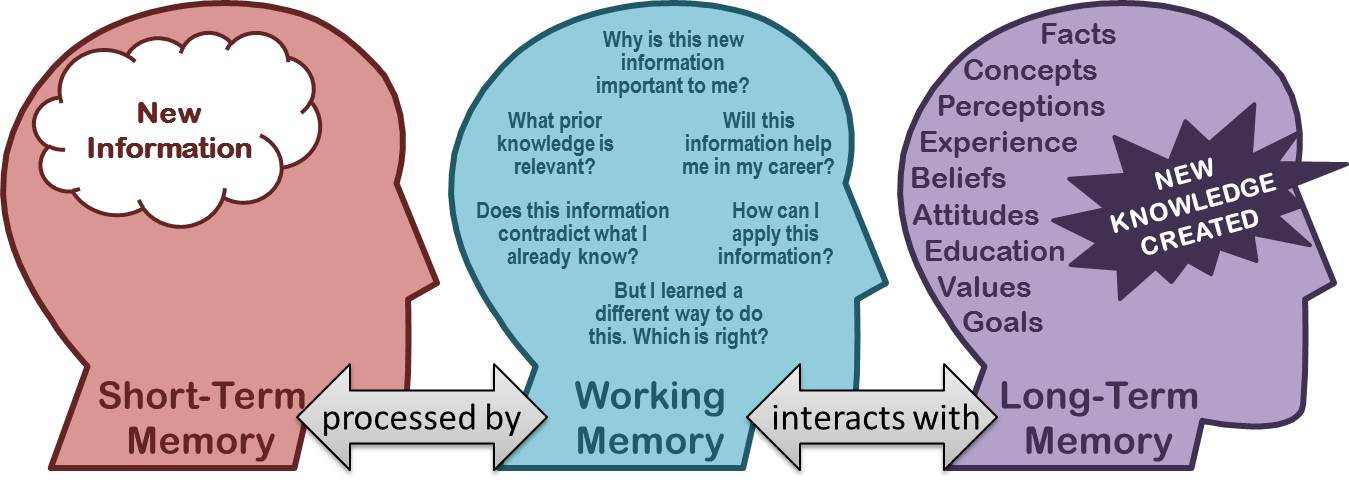
- Learning objectives are an important tool for the instructor, but most important for the students
- Teacher- vs. Student-centric learning objectives
- Behavior
- An observable and/or measurable action
- Bloom’s Taxonomy’s domains
- KSA: Knowledge, Skills, Attitude
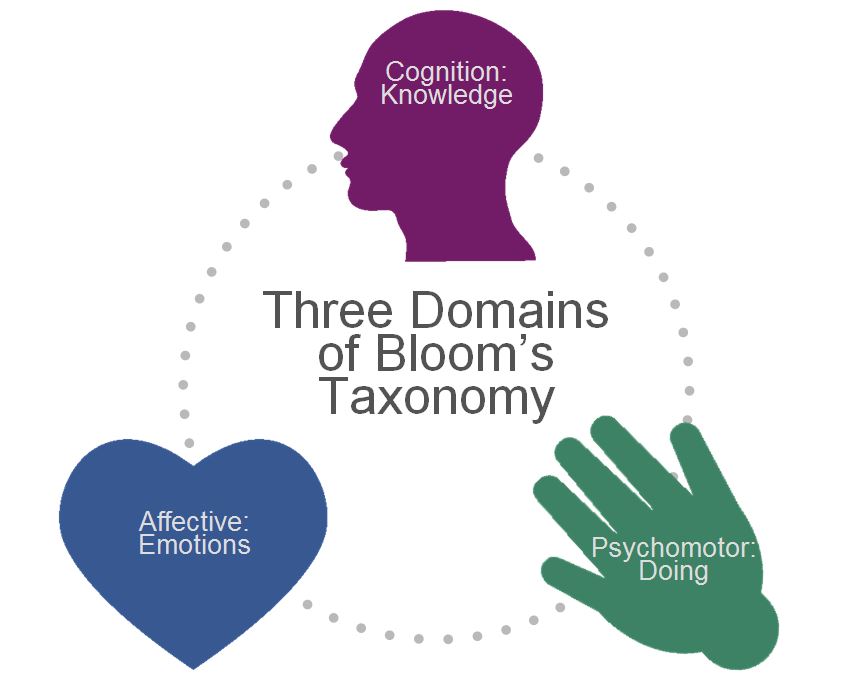
- Cognitive domain:
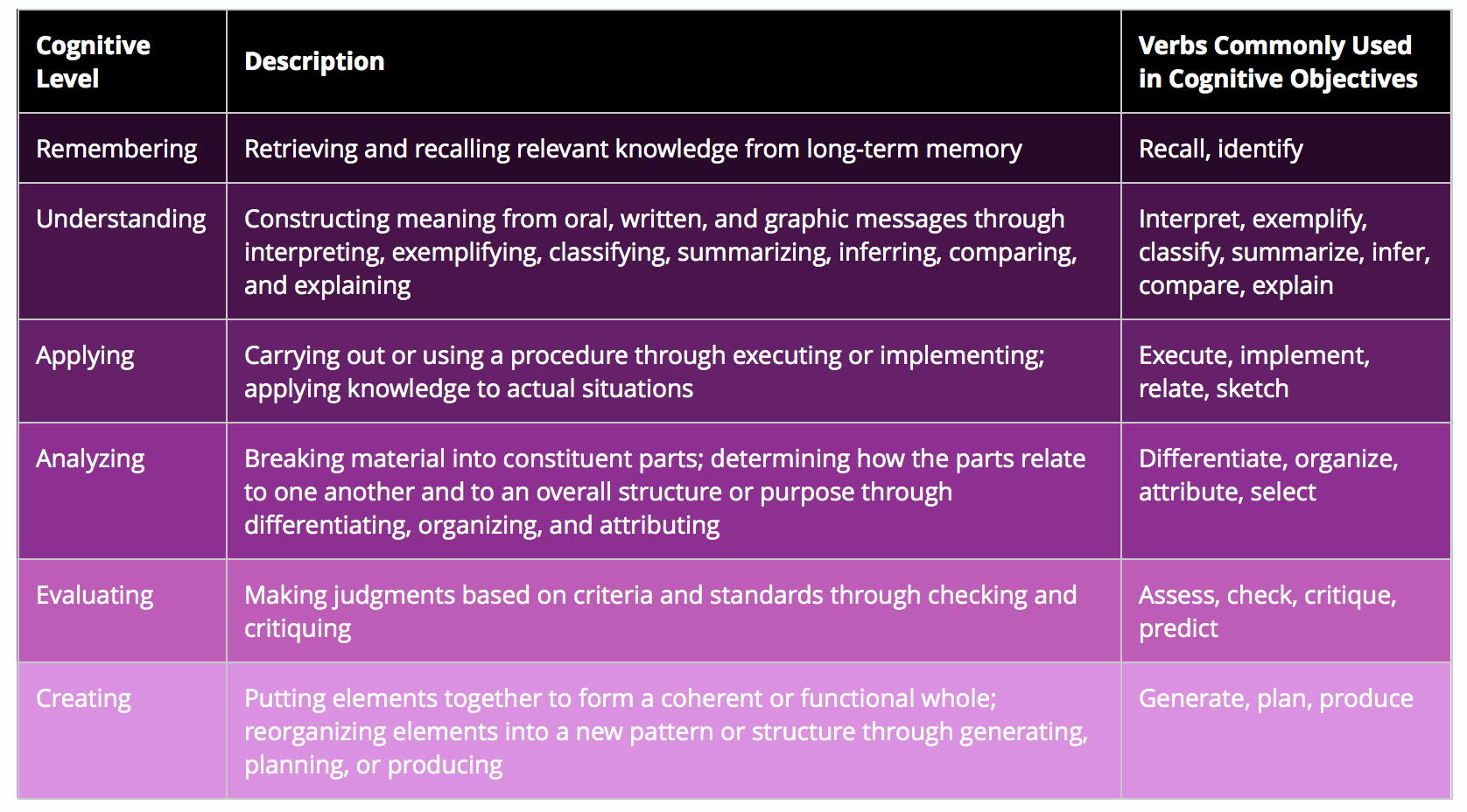
- Examples:
- Remember
- Students will be able to define mitosis.
- Students will be able to name the phases of mitosis.
- Understand
- Students will be able to explain the process of mitosis.
- Students will be able to summarize the central limit theorem.
- Apply
- Students will be able to sketch the progression of mitosis in a five-stage diagram.
- Students will relate the law of supply and demand to the costs of health care.
- Analyze
- Students will be able to compare and contrast classical conditioning and operant conditioning.
- Students will be able to select a healthy exercise plan for an overweight child.
- Evaluate
- Students will be able to evaluate the George W. Bush administration’s actions in conducting the 2003 U.S.-led invasion of Iraq without declaring war.
- Students will be able to assess current artificial intelligence technology and describe its potential applications in health care.
- Create
- Students will be able to compose a villanelle (a poem of 19 lines with two refrains and two repeating rhymes).
- Students will be able to create a three-dimensional bump map in Adobe Photoshop.
- Remember
- Examples:
- Knowledge domain
- Factual: Knowledge of terminology and of specific details and elements
- Conceptual: Knowledge of classifications and categories; principles and generalizations; theories, models, and structures
- Procedural: Knowledge of subject-specific skills and algorithms, techniques, and methods; criteria for determining when to use appropriate procedures
- Metacognitive: Strategic knowledge; knowledge about cognitive tasks, including appropriate contextual and conditional knowledge; self-knowledge
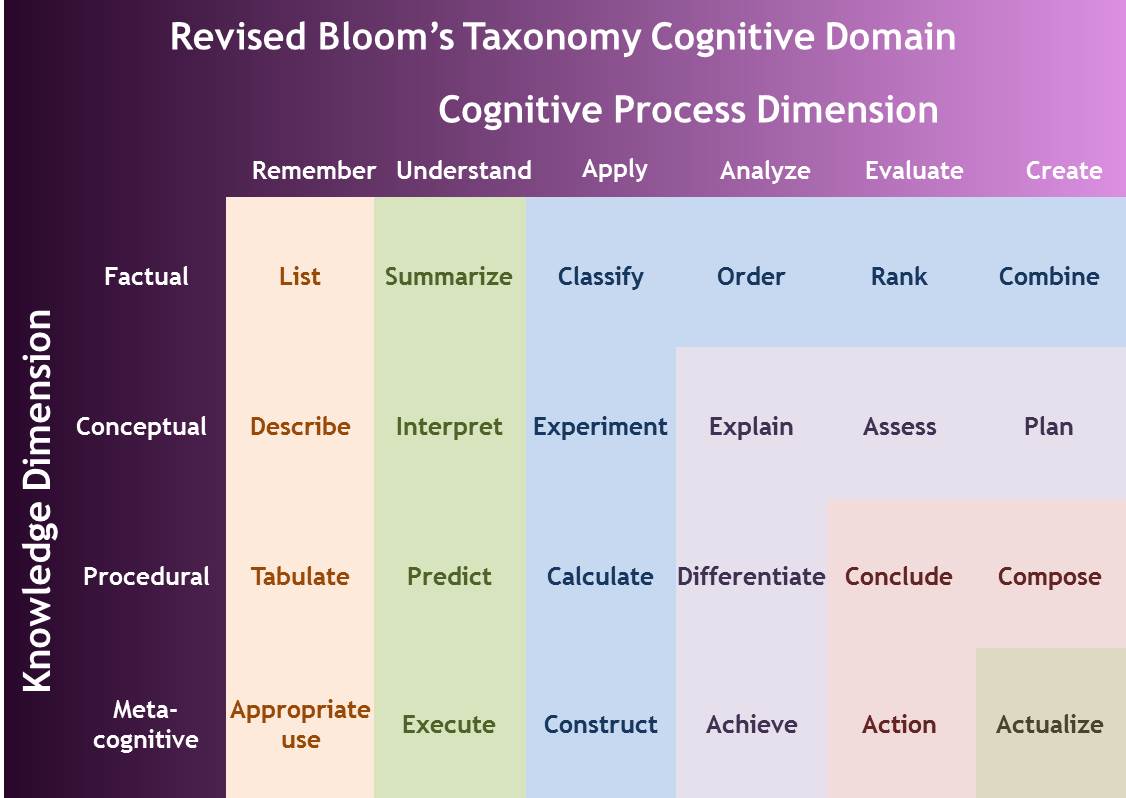
- Psychomotor domain

- Affective domain
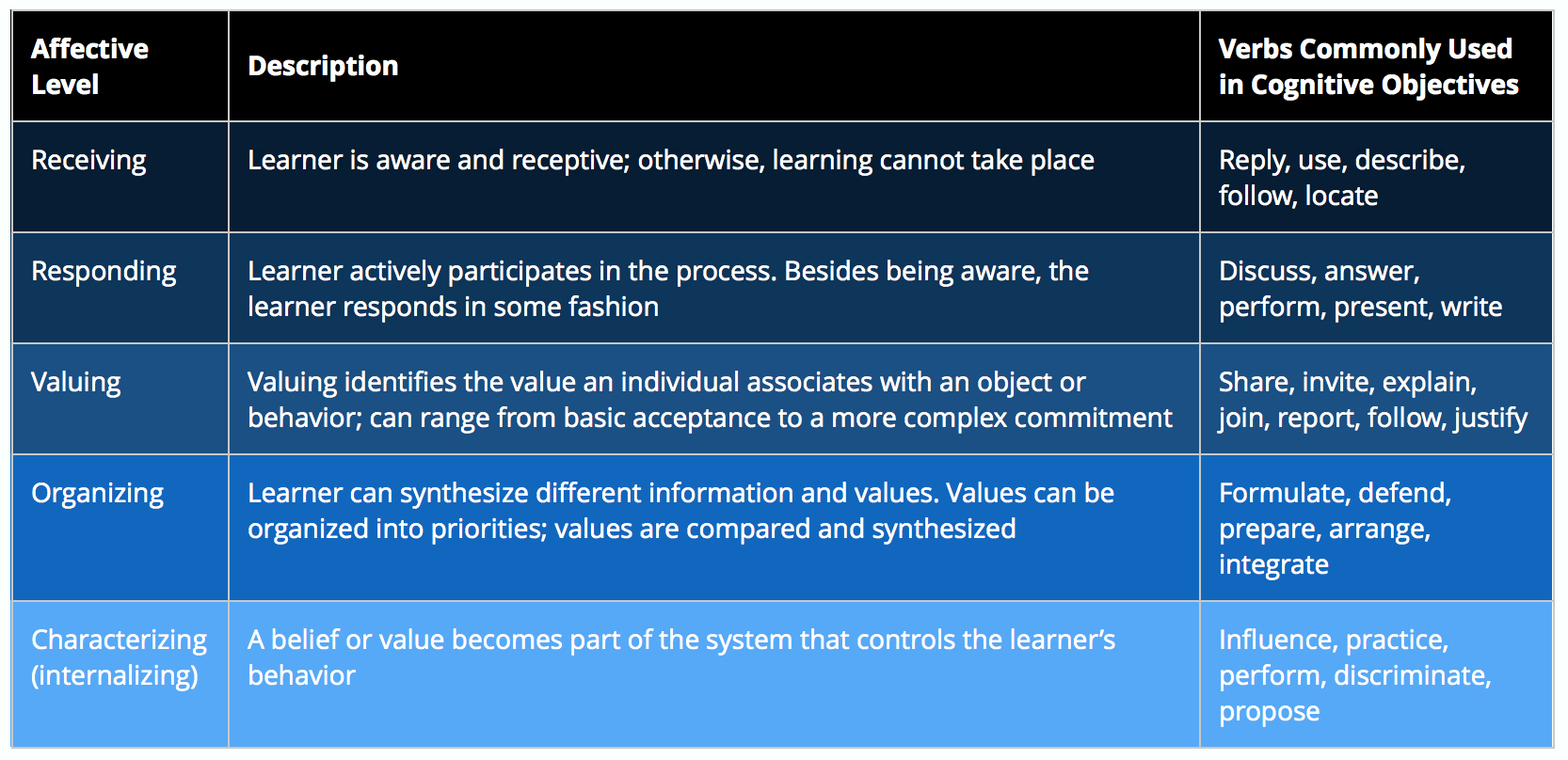
- Condition
- What is it?
- What a student may or may not use to demonstrate mastery of the objective
- The circumstance under which the behavior is to be performed.
- What is it?
- Degree
- Sometimes the degree is implied: “without errors” for example
- “The audience is the learner who will demonstrate the behavior under specified conditions and to an acceptable degree.”
- Scope and size
- Can be broad and all encompassing or small and specific
- Can be for the entire course and can be for a specific module
- Questions to reflect upon when creating a learning objective
- Too big
- Do your objectives sound generic, as though they could appear on a syllabus in almost any course or discipline?
-
Could your objectives describe an entire curriculum?
- Too small
-
Do your objectives contain repetition and overlap?
- Do your objectives read like the task specifications for an assignment?
-
- Too big
- Developing learning objectives is
- A time-consuming process: It takes careful thought and revision to produce a polished set of learning objectives. Allow yourself plenty of time for this task.
- An iterative process: Learning objectives provide the foundation for designing your course, but once they are written, expect to revise and refine the objectives to keep them in alignment with your content, activities, and assessments.
- A flexible process: You can find helpful tips and guidelines for developing effective learning objectives, but you will not find rigid rules. You (and your team if you work with one) must be flexible as you create objectives that work best for your course.
- ABCD approach
- “Learning objectives describe the knowledge and skills we want students to gain from our instruction. Learning objectives are used to provide a framework for selecting and organizing course content and learning activities, guide decisions about assessment and evaluation methods, and give learners information for directing their learning efforts and monitoring their progress.